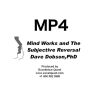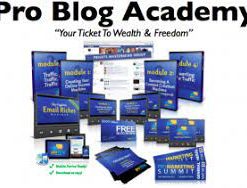Malcolm Gladwell Teaches Writing
$90.00 Original price was: $90.00.$33.25Current price is: $33.25.
Meet your instructor—best-selling author and longtime New Yorker staff writer, Malcolm Gladwell. Malcolm outlines what he has planned for your class File size: 2.06 GB
Malcolm Gladwell Teaches Writing
Ketchup. Crime. Quarterbacks. Thanks to Malcolm Gladwell’s books, these ordinary subjects have helped millions of readers grasp complex ideas like behavioral economics and performance prediction. Now, the renowned storyteller and best-selling author of Blink and The Tipping Point is teaching his first online writing class. Craft stories that captivate by learning how Malcolm researches topics, crafts characters, and distills big ideas into simple, powerful narratives.
01. Introduction
Meet your instructor—best-selling author and longtime New Yorker staff writer, Malcolm Gladwell. Malcolm outlines what he has planned for your class and reflects on the idea of writing as a calling.
2:42
02. Structuring Narrative: The Imperfect Puzzle
Malcolm likes an imperfect argument—the perfect argument is too obvious. Learn how Malcolm builds an open-ended puzzle into his story, “The Ketchup Conundrum.”
Get immediately download Malcolm Gladwell Teaches Writing
18:16
03. Holding Readers: Tools for Engagement
Data is a big part of Malcolm’s stories. Learn three ways Malcolm helps readers digest data and engage with complex ideas in his writing.
13:40
04. Holding Readers: Controlling Information
Learn how to use surprises, guessing games, and suspense to invite readers into your story.
13:24
05. Research
Malcolm shares his guiding principles to uncovering a good idea for a story through research.
14:32
06. Selecting the Story
What makes a story worth pursuing? Malcolm talks through his criteria for spotting a unique story and the first steps of story development.
12:34
07. Developing the Story
Learn how Malcolm grows the idea of a story, and how he tests new ideas with family and friends.
12:37
08. Developing the Story: Analogous Worlds
Using David and Goliath and “What the Dog Saw,” Malcolm teaches you how to look for patterns and draw connections between seemingly disparate ideas.
15:28
09. Interviewing
The interview is the critical foundation for developing character in nonfiction. Malcolm teaches you how to conduct an interview to uncover what is uniquely interesting about your subject.
15:28
10. Characters: Descriptions
Malcolm breaks down two pieces of his own writing—one written for The New Yorker and one for a medical journal—to illustrate how he brings a new character to life.
9:48
11. Characters: World Building
If you could choose to describe a character by the way they look, or by what they keep in their bedroom, Malcolm says to choose the bedroom. Learn how to use the setting and action around a character to build their personality.
10:10
12. Character Case Study: “The Pitchman”
Malcolm believes that when you reveal story is just as important as what that story is. He explains this idea with an in-depth look at one of his favorite characters, late-night television pitchman Ron Popeil.
15:52
13. Structuring Language
Learn how Malcolm uses sentence length and punctuation to guide readers through a sophisticated idea.
9:56
14. Jargon
Using a New Yorker article he wrote about a company testing out a new drug, Malcolm demonstrates how to employ jargon to hook your readers.
10:03
15. Tone and Voice
Malcolm explains how to calibrate your tone for your readership using examples from his book David and Goliath and his own public speaking Q&As.
17:02
16. Humor and Melancholy
Malcolm feels that restraint is essential in the production of real emotion. Learn how to introduce humor and melancholy to form deep connections with your readers.
Get immediately download Malcolm Gladwell Teaches Writing
9:44
17. Case Study: Language and Emotion in “Something Borrowed”
Using his essay “Something Borrowed” as an example, Malcolm demonstrates how to use language and emotion to build a powerful narrative.
15:08
18. Titles
For Malcolm, a title is the ultimate attention-grabber. Learn how to write powerful titles that will speak to your reader’s emotions.
8:28
19. Drafts and Revisions
Getting a piece of writing to a finished state is a process. Malcolm walks you through his approach, from first draft to final polishing.
20:19
20. When Your Story Enters the World
Once your story is published, the world will respond. Learn Malcolm’s tips for promoting your work, dealing with critics, and what to do when readers misinterpret your intent.
7:23
21. Working as a Writer
Learn Malcolm’s advice for aspiring writers, including how to launch and maintain your career as a professional writer.
8:21
22. How to Read
Malcolm believes that you can’t become a great writer without being a great reader. Learn Malcolm’s strategies for critical reading.
12:17
23. Who to Read
Malcolm breaks down the strengths of some of his favorite writers: Lee Child, David Epstein, Michael Lewis, and Janet Malcolm.
13:30
24. Conclusion: A Theory of Other Minds
Malcolm delivers his parting words about the true intent of nonfiction writing.
7:52
Be the first to review “Malcolm Gladwell Teaches Writing” Cancel reply
Related products
Other Courses
Other Courses
Other Courses
Other Courses
Other Courses













Reviews
There are no reviews yet.